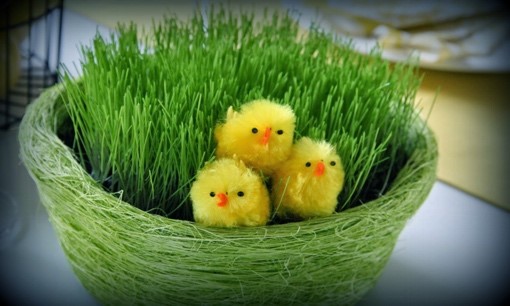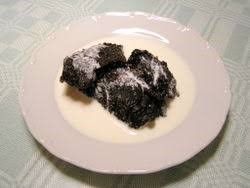Hyvää Pääsiäistä! – Happy Easter!

Finland is a country that owns and maintains many traditions. Many of these traditions have been inherited, mixed, and adapted over time. The Easter tradition has a mixture of pagan and Christian customs, as well as a reference to the Spring time. It is common in this period that children dress up as witches, paint their faces and go for the houses of the neighbourhood, together with their magic wands, made of willow branches decorated with feathers, ribbons and flowers.
This powerful artefact can bring to your home a blessing that is said by them, but to be blessed there is a price to pay, sweet and easy price to negotiate. When they arrive in each house, the little witches push away the evil spirits reciting the enchantment “Virvon, varvon, tuoreeks terveeks, tulevaks vuodeks; vitsa sulle, palkka mulle!” (Translating: I have a magic branch for a new and healthy year, a branch for you and a candy for me!).
The lucky and now blessed inhabitant receives the magic wand that will now be his/her amulet that will bring luck and protect him, in exchange offers chocolates, candy and sweets to the benefactors. (Do not worry if you are visited by these lovely creatures and you are not prepared with sweets, you can pay in cash, sometimes the traditions also accept the modernity in case of need). This tradition was inherited from the ancient peoples, who used to bless cattle, plantations, and people in the early spring, and the healers received some reward.
Another old habit that still happens is the planting of grass in early spring, today children plant grass seeds in pots and observe their growth, symbolizing the renewal, when the grass is grown and green, is decorated with small chicks called “rairuoho”, which are used to decorate the table.
The houses are also usually adorned with garlands, flowers and symbols of fertility (pre-Christian), like rabbit and eggs. Among the religious celebrations is usual rituals and celebrations throughout the holy week, on Holy Thursday they have the “kiirastorstai” which is the celebration of the Lord’s Last Supper. Stages of the passion of Christ are also popular, in Helsinki happens procession of the Passion of the Way of the Cross. In some places, bonfires are lit on the Sabbath of hallelujah to ward off the evil spirits and ensure a quiet and happy Easter Sunday.
Easter brings the family together in the Sunday lunch time, usually the main course is lamb shank, and for dessert they have “pasha” which is a type of creamy pudding made from curds, eggs, butter, sour cream and candied fruit (sometimes decorated with religious themes) and “mämmi”, a soft brown-looking pudding of malt and rye flour that is eaten with milk. They say “mämmi” is a recipe for the 16th century, originally it was eaten during Lent. Its laxative properties were associated with purification. As the dish can be kept for several days, it was also a convenient food for the Holy Friday, while cooking was against religious customs.

Mämmi (Mämmi picture: http://www.wikiwand.com/en/M%C3%A4mmi )
Finally, the 4-day holiday is perfect for the transition from the cold and difficult period of the harsh winter to a mild and flowering spring period, celebrated with visits to family and outdoors tours, to welcome the new season that can change not only the landscapes but the state of mind of those who live here.
Matheus Soares Costa